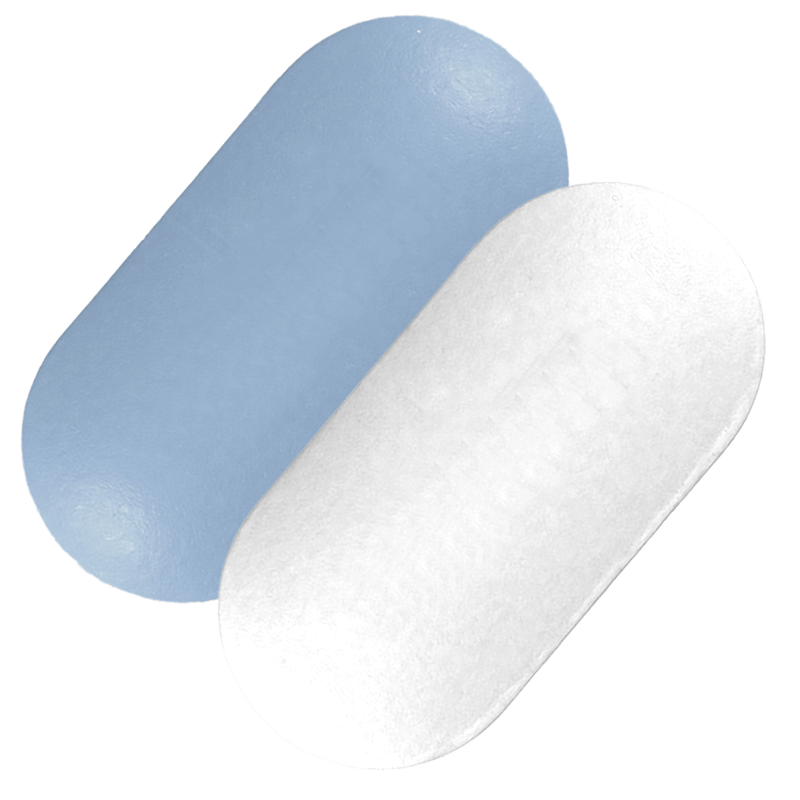Cheaper version of Champix


Varenicline is a pill that makes quitting smoking easier. It helps stop cravings, so you can give up for good.
If you need help with quitting smoking, just answer a few questions on your health. Order Varenicline online with Treated and we’ll deliver straight to you.
Varenicline is a pill you take everyday to help you quit smoking. It has the same active ingredient as Champix, so they work in pretty much the same way.
Most people who approach a clinician for treatment to stop smoking aren’t ready to quit right away, but that’s okay. Varenicline helps you stop smoking slowly, without cravings halting your progress. You can also pick the way you want to approach it, so there’s a bit of flexibility.
Varenicline helps you stop smoking by making smoking less enjoyable and reducing cravings. It does this by working on the receptors in your brain that transmit dopamine- the “feel-good hormone”.
Varenicline binds to these receptors, preventing nicotine from doing so as strongly. That means smoking won’t provide the same dopamine hit, and you won’t get as many cravings. That means Varenicline makes it a lot easier to give up smoking.
It comes in two doses: 0.5mg and 1mg. If you go for the 0.5mg option, you’ll take one pill for the first three days. For the rest of your treatment, you’ll take it twice a day. If 1mg is right for you, you’ll still start off taking a 0.5mg pill for the first three days. Then on day 4-7, you’ll take a 0.5mg pill twice a day. For the rest of your treatment, you’ll take 1mg twice a day.
The 1mg dosing regimen for Varenicline is a little more effective, and it’s most used. But if you have certain medical conditions, you might need to go for the lower dosing schedule. Once you’ve quit smoking, your clinician might suggest you ‘taper off’ your dose to reduce any chance of withdrawal. That means you slowly take smaller and smaller amounts each day, until you’re completely finished with treatment.

How we source info.
When we present you with stats, data, opinion or a consensus, we’ll tell you where this came from. And we’ll only present data as clinically reliable if it’s come from a reputable source, such as a state or government-funded health body, a peer-reviewed medical journal, or a recognised analytics or data body. Read more in our editorial policy.
Make sure you take Varenicline exactly as your clinician tells you. There are a few variations in how to take it, so make sure you follow their detailed instructions.
It’s best to take Varenicline after a meal. So if you’re taking it twice a day, maybe take it after breakfast and your evening meal. Take your pill with a full glass of water. Varenicline can sometimes cause nausea, so food and plenty of water can help avoid this.
There are a few different approaches to taking Varenicline you can try.
With the fixed quit approach, you pick a date when you want to quit smoking. Then you start taking Varenicline one or two weeks before this date.
There’s also the flexible quit approach. If you’re doing it this way, you start taking Varenicline. Then anywhere between days 8 and 35 of treatment (or weeks two and five), you stop smoking.
Finally, you have the gradual quit approach. With this approach, you aim to stop smoking by the end of week 12 of treatment. After four weeks, you should reduce how much you smoke by 50%, and 75% by eight weeks.
If you’ve forgotten to take a pill, just take it right away when you remember. If it’s nearly time to take your next pill, just skip the missed one and carry on as normal.
What if you take too much Varenicline? You might feel nauseous or even vomit. It’s always a good idea to contact a clinician if you take too much Varenicline.

How we source info.
When we present you with stats, data, opinion or a consensus, we’ll tell you where this came from. And we’ll only present data as clinically reliable if it’s come from a reputable source, such as a state or government-funded health body, a peer-reviewed medical journal, or a recognised analytics or data body. Read more in our editorial policy.
Have something specific you want to know? Search our info below, or ask our experts a question if you can’t find what you’re looking for.

Registered with ACP (No. 2382)
Meet Paul
Registered with GMC (No. 4624794)
Meet Daniel
Registered with NPI (No. 1700446366)
Meet LaurenmarieShipping, consultation, treatment. It’s all included in the price.
| Quantity | Starting from |
|---|---|
| 53 Tablets | $143.95 |
| Quantity | Starting from |
|---|---|
| 56 Tablets | $163.95 |
| 112 Tablets | $244.95 Save $82.95 |
| 168 Tablets | $324.95 Save $166.90 |
| Quantity | Starting from |
|---|---|
| 56 Tablets | $163.95 |
| 112 Tablets | $244.95 Save $82.95 |
| 168 Tablets | $324.95 Save $166.90 |
| Quantity | Starting from |
|---|---|
| 53 Tablets | $222.95 |
| Quantity | Starting from |
|---|---|
| 60 Tablets | $403.95 |
We know health, but you know you.
Our experts tell you what’s safe, but you decide what’s best.
Answer a few questions and tell us about yourself. Get tailored advice from our clinicians so you can choose better.
Choose your treatment and how often you have it delivered.
We know things change. It’s the nature of life. We’ll check in regularly to make sure your treatment is still right for you.
Pause. Change. Skip. Start again. Any time you like.
We're making healthcare more about you. Sign up to our newsletter for personalised health articles that make a difference.
Disclaimer: The information provided on this page is not a substitute for professional medical advice, diagnosis, or treatment. If you have any questions or concerns about your health, please talk to a doctor.
We couldn't find what you're looking for.
Here's everything we treat. Or, if you're looking for something we don't have yet, you can suggest something.
If there’s a particular treatment or condition you’re looking for, tell us and we’ll look into it for you.
Submit your question here, or tell us if you’ve found an issue on our site.
By clicking 'Subscribe now' you're agreeing to our Terms.
You’re signed up to our newsletter. Keep an eye on your inbox for our latest update.
We’ll get back to you very soon. We aim to respond to all queries in one working day.
We’ve sent you an email asking you to confirm your email address.